How to Freeze Cabbage (Step-by-Step Guide)
Cabbage is an excellent vegetable for freezing, and frozen cabbage can be used in a variety of ways. Learn how to freeze fresh cabbage in this helpful step-by-step guide.
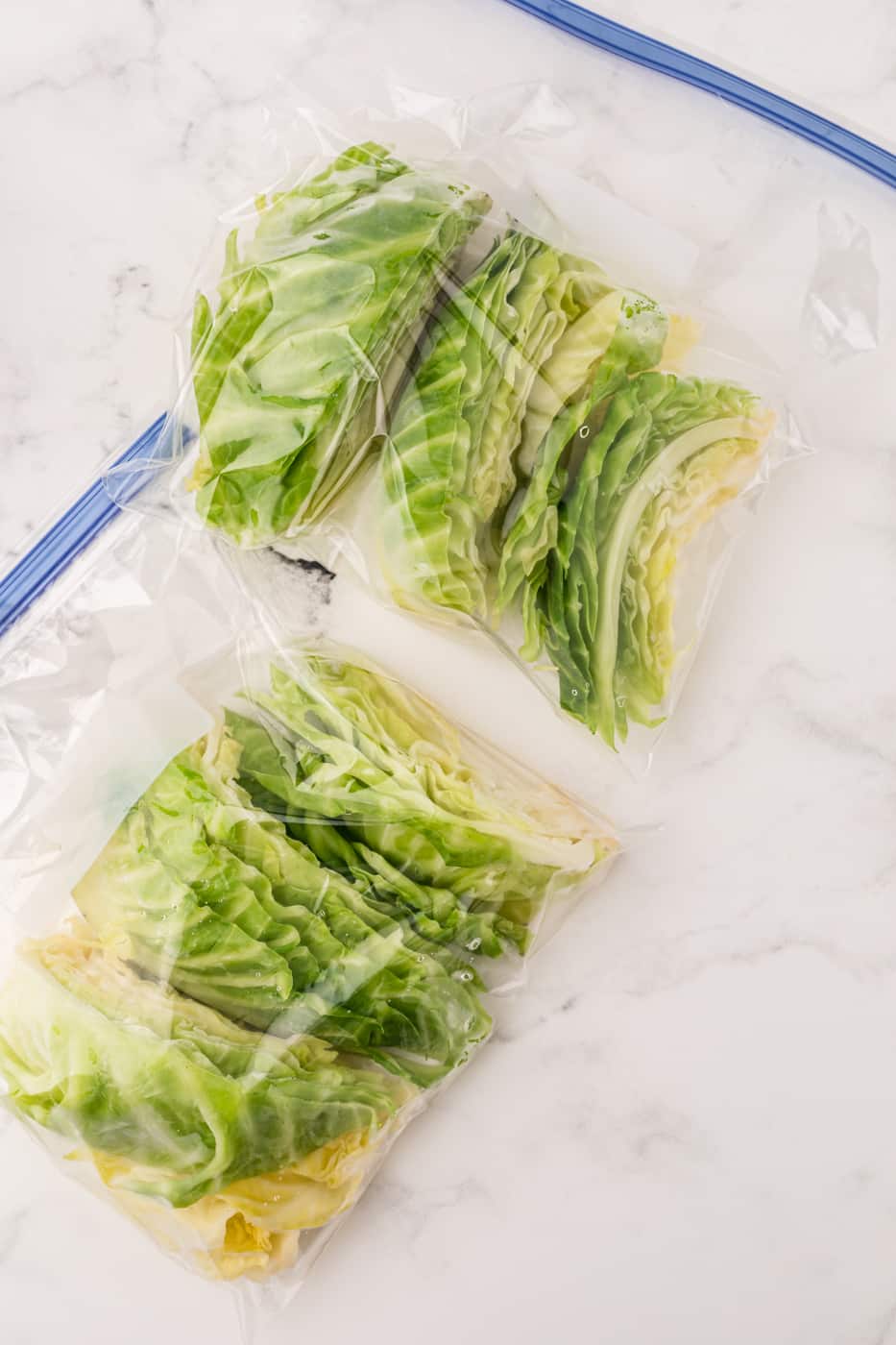
Cabbage is great raw in salads or cooked into dinner favorites, and it is especially easy to toss into soups including cabbage soup, Instant Pot Cabbage and Sausage, or any other type of veggie soup.
Sometimes cabbage heads can be pretty large and they are very voluminous when chopped, so you may find yourself with excess on hand.
This guide is a great way to show you exactly the best way how to freeze cabbage.
Ingredients
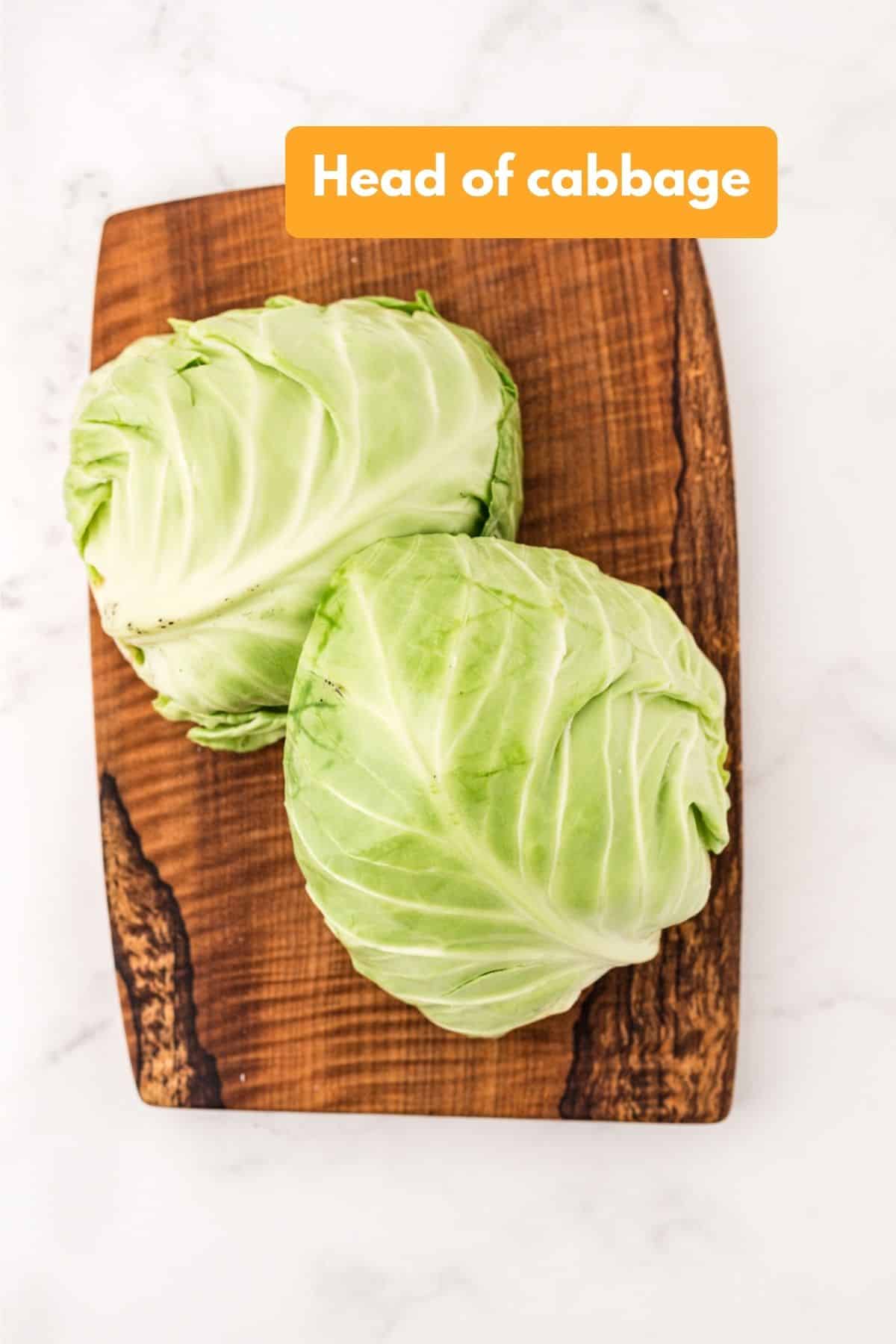
- Green cabbage should be firm and heavy for its size. Look for raw cabbage that has crisp green leaves with no bruises, blemishes or discoloration.
- You can also freeze purple cabbage or Napa cabbage as well. You can also freeze shredded cabbage, but it’s much more likely that you’ll want to freeze a cabbage head or whole cabbage than cabbage pieces.
- Look for cabbage in the produce section of your local grocery store.
Please see the recipe card at the end of this post for the exact ingredients and measurements.
Steps for Freezing Cabbage
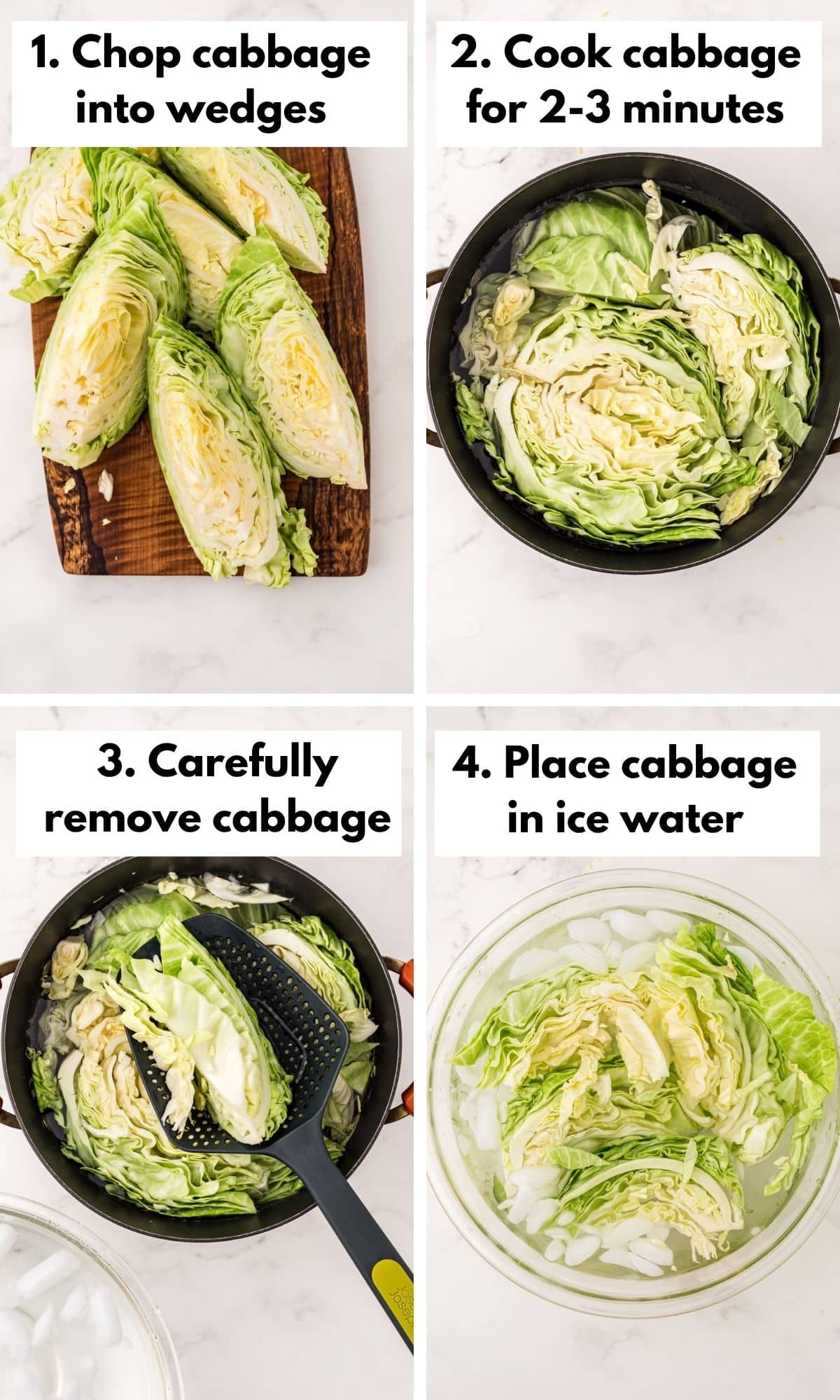
Step One
Remove the coarse outer leaves of the cabbage and discard.
Place your cabbage on a cutting board and cut it into large wedges. Discard the tough inner core of the cabbage.
Cabbage should be blanched before freezing. Blanching involves placing food in boiling water for a few minutes to help kill any bacteria that could grow while frozen.
Step Two
Heat a large pot with water until it is simmering.
Use tongs or a slotted spoon to carefully place the chopped cabbage into the hot water.
Please see the recipe card at the end of this post for the exact ingredients and measurements.
Step Three
Let the cabbage cook for 2-3 minutes and then use a slotted spoon or a colander to transfer the blanched cabbage into a bowl of ice water (ice bath) or very cold water.
The ice water will stop the cooking process and enzyme action and prevent the cabbage from getting overcooked. This will give you the best texture to your cabbage leaves once thawed.
Step Four
Shake out the excess water from the blanched cabbage wedges and place them onto a parchment paper-lined baking sheet or cookie sheet.
Place in the freezer for at least 6 hours.
Then, transfer the frozen cabbage to zip-top freezer bags for freezing up to 2 months. Freezing them separately after drying ensures they do not stick together.
Try to squeeze as much air out of the plastic bag before the freezing process.
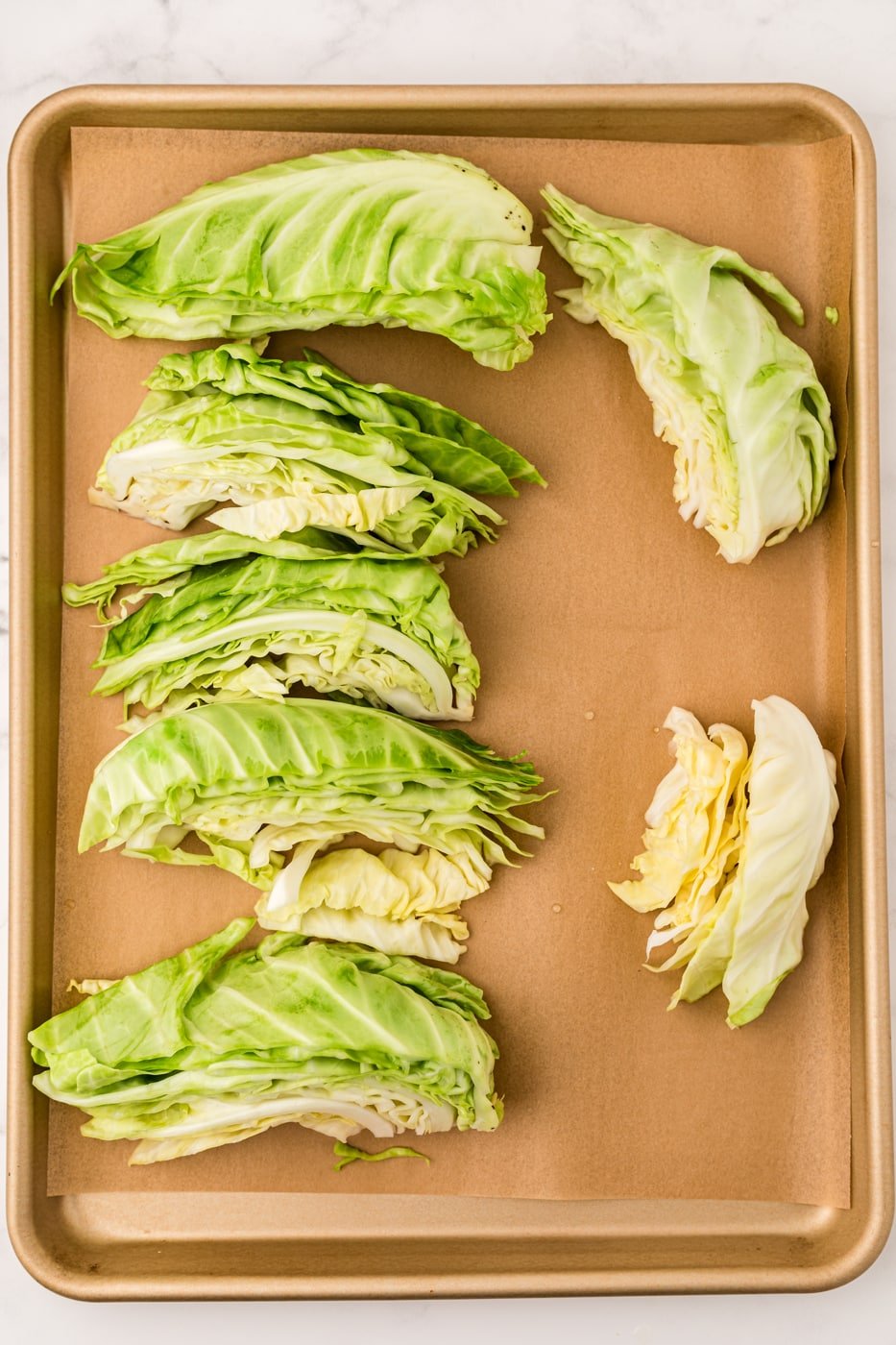
Recipe Tips
- For most recipes using cabbage, you don’t need to defrost the cabbage first. Place the frozen cabbage wedges directly into a hot pot of soup or into whatever recipe you are making. Cook the cabbage a few minutes longer than you would if it were raw to ensure that it gets warmed through.
- You can use either red cabbage or green cabbage for this recipe.
- Try to use your frozen cabbage within 3-4 months. If frozen longer, it may develop freezer burn.
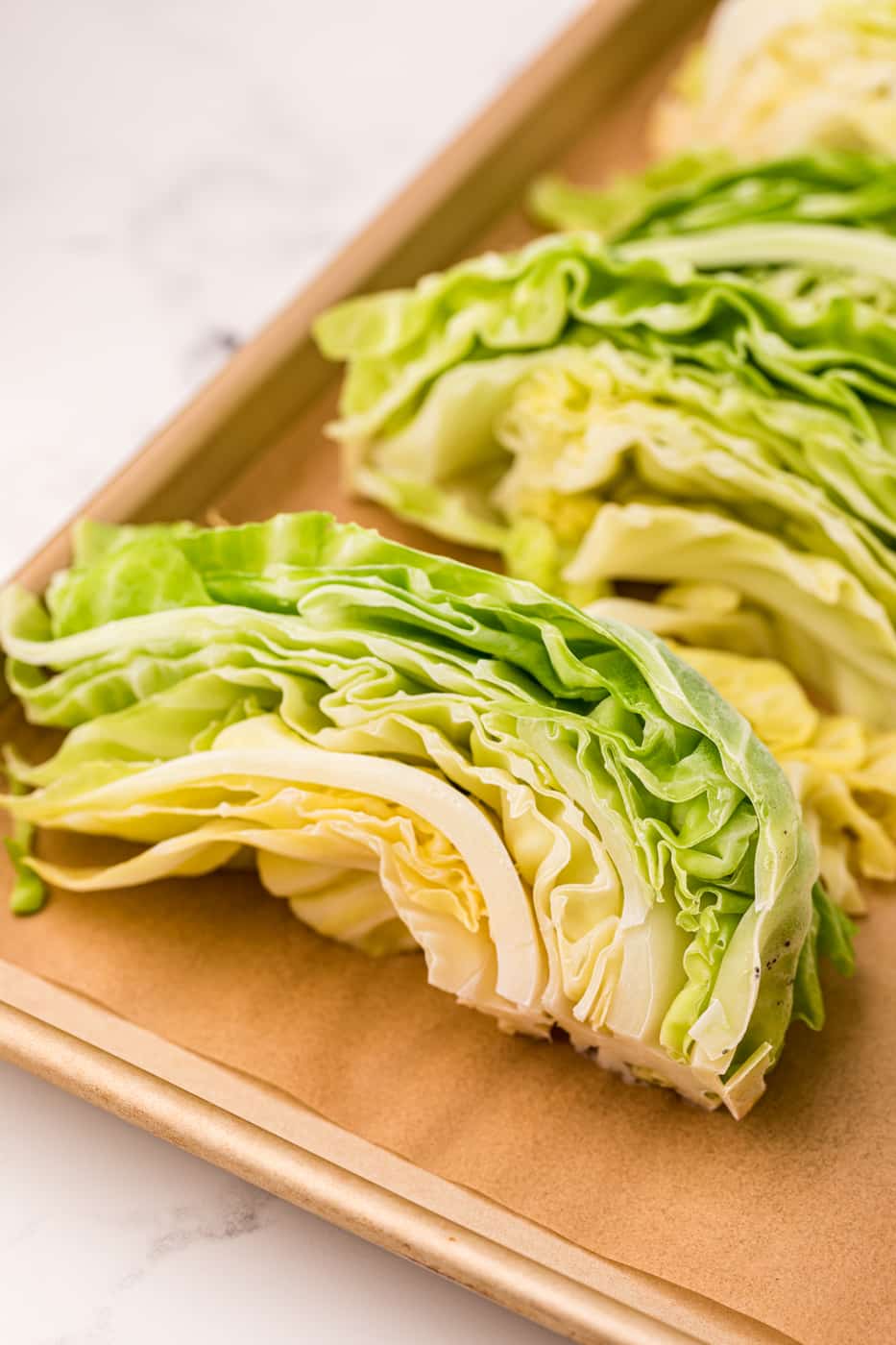
Recipe FAQs
You can, but it needs to be blanched first. Blanching gives vegetables a bright color and takes the raw edge off. You can think of this as par-cooking. It will leave the vegetable in a very healthy state to be used later. Make sure you have fresh and firm cabbage to blanch and freeze. Chop before blanching, and dry well before freezing.
Frozen cabbage can be added right into your favorite recipes. Especially for soup, just have it chopped before freezing so it is the right size for your spoon. Cabbage is also great with a tomato-meat sauce and rice. Simple foods can be so nourishing!
Recipe that Use Frozen Cabbage
- Keto Crockpot Chicken Thighs with Cabbage
- Instant Pot Cabbage & Sausage
- Easiest Instant Pot Cabbage (3 Ingredients)
- Easiest Slow Cooker Corned Beef & Cabbage
- Cabbage Vegetable Soup
- Air Fryer Cabbage
Don’t Miss These Freezer Guides
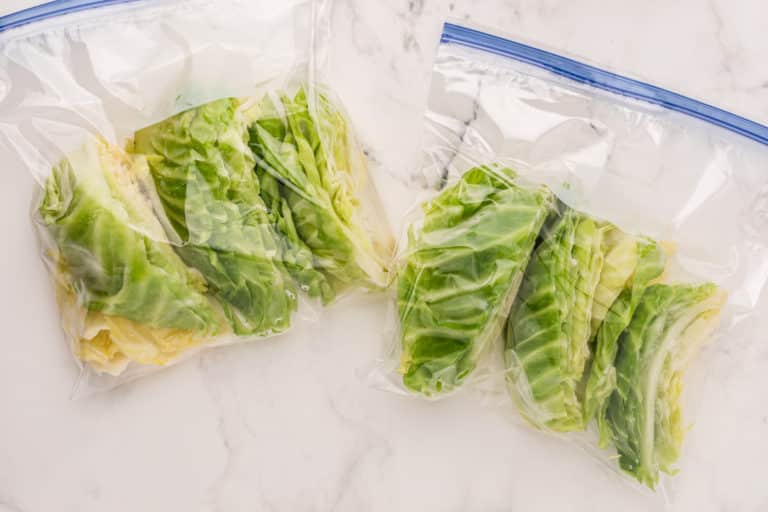
How to Freeze Cabbage (Step-by-Step Guide)
Cabbage is an excellent vegetable for freezing, and frozen cabbage can be used in a variety of ways. Learn how to freeze cabbage in this helpful step-by-step guide.
- Total Time: 6 hours 20 minutes
- Yield: 4 1x
Ingredients
- 1 large head of cabbage
Instructions
- Chop cabbage into wedges and remove the tough core.
- Bring a large pot of water to a simmer and have a large bowl of ice water ready.
- Carefully add chopped cabbage to the pot using tongs so you don’t splash.
- Cook for 2-3 minutes, or until cabbage has a bright color. Do not overcook!
- Carefully remove cabbage with tongs or drain in a colander and add to ice water to shock and stop cooking.
- Dry well and place on a parchment-lined baking sheet to freeze for at least 6-12 hours.
- Once frozen, add to labeled freezer zip-top bags.
- Use from frozen in your favorite soups and other recipes!
Notes
- For most recipes using cabbage, you don’t need to defrost the cabbage first. Place the frozen cabbage wedges directly into a hot pot of soup or into whatever recipe you are making. Cook the cabbage a few minutes longer than you would if it were raw to ensure that it gets warmed through.
- You can use either red or green cabbage for this recipe.
- Try to use your frozen cabbage within 3-4 months. If frozen longer, it may develop freezer burn.
- Prep Time: 20 minutes
- Cook Time: 6 hours
- Category: Side dish
- Method: Freezer
- Cuisine: Healthy
- Diet: Vegan
Nutrition
- Serving Size: 1/4 of cabbage
- Calories: 78
- Sugar: 10 g
- Sodium: 56.2 mg
- Fat: 0.3 g
- Saturated Fat: 0.1 g
- Carbohydrates: 18.1 g
- Fiber: 7.8 g
- Protein: 4 g
- Cholesterol: 0 mg
Don’t forget to join my newsletter list to get exclusive clean eating recipes and tips. The newsletter is 100% free with no spam; unsubscribe anytime.
About the Author: Carrie Forrest has a master’s degree in public health with a specialty in nutrition. She is a top wellness and food blogger with over 5 million annual visitors to her site. Carrie has an incredible story of recovery from chronic illness and is passionate about helping other women transform their health. Send Carrie a message through her contact form.


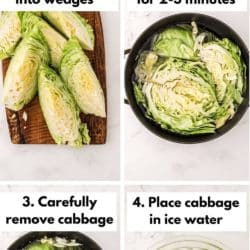
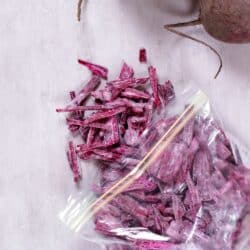
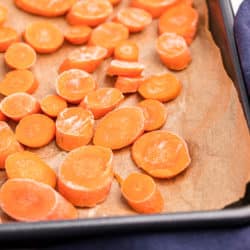
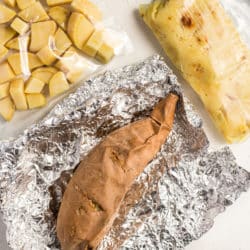
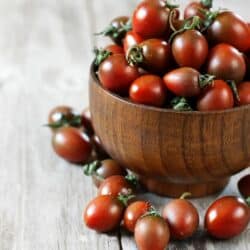



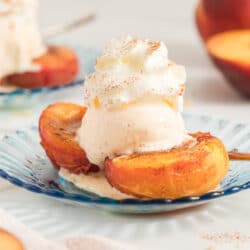

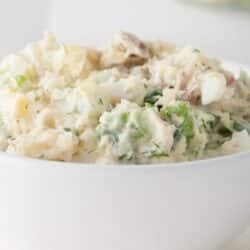





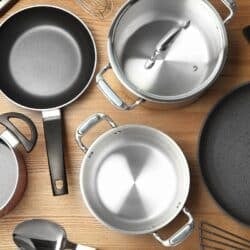

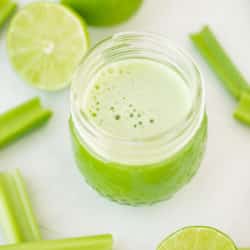


Love this helpful guide!